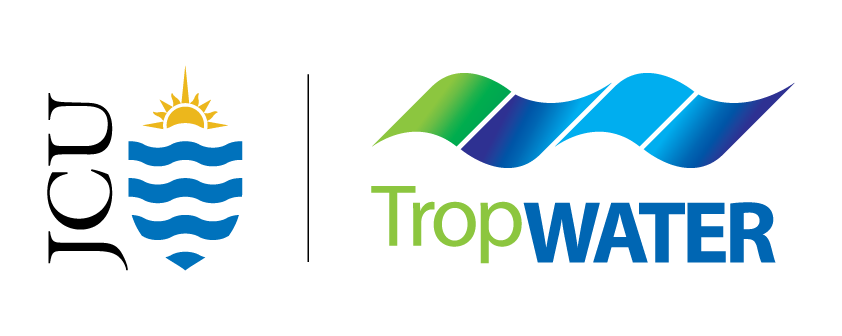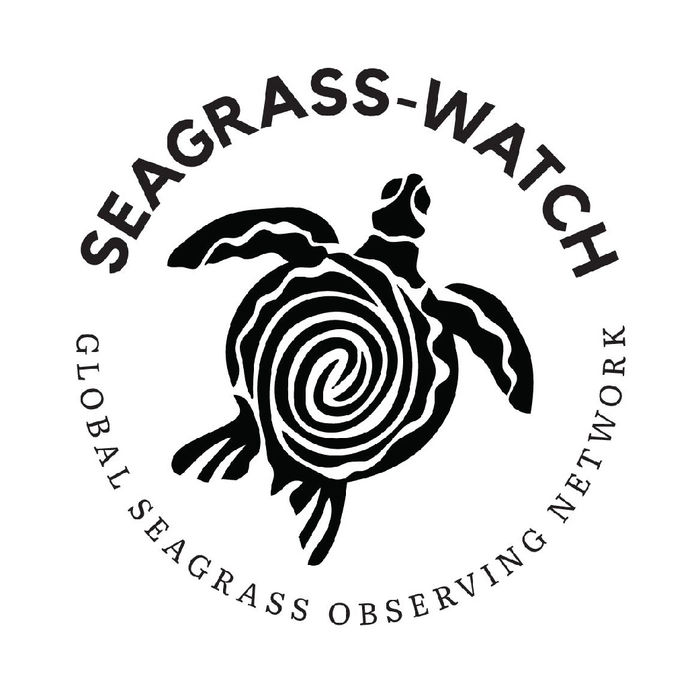Networks and partnerships
Our work is made possible by building collaborative networks and establishing strong partnerships.

Networks we lead
TropWATER leads a range of impactful networks that support research, conservation, and management of aquatic ecosystems. These networks focus on facilitating collaboration and building partnerships that span research institutions, government, industry, and community organisations.

Australasian Coastal Restoration Network
-
Coastal conservation, restoration, and management efforts can be strengthened and improved by building connections between researchers, organisations, and environmental managers.
-
The Australasian Coastal Restoration Network brings together these organisations across Australia to collaborate and share knowledge.
-
The Network facilitates communication, collaboration, and networking between individuals and organisations and provides information on further resources
Challenges to effective restoration
From coral reefs, oyster reefs and kelp forests to saltmarsh, mangroves, and seagrasses, coastal ecosystems are diverse and play key roles in protecting coasts, filtering water, and supporting biodiversity.
Climate change, human development, and extreme climate events all pose significant ongoing threats to coastal ecosystems. Restoration and management are critical to supporting these valuable environments, but there are different challenges presented by each of the many ecosystem types found along our coastlines.
Effective conservation, restoration, and management of these ecosystems requires communication between professionals, sharing knowledge and working together for the best ecological outcomes.
Goals of the network
The ACRN aims to:
-
Support and facilitate networking between organisations and individuals interested coral ecological restoration and management.
-
Provide opportunities for ACRN members to meet and network each year at an annual symposium.
-
Improve and increase awareness of coastal habitats and the value of conservation and restoration activities.
-
Serve as a single point of reference for useful resources including relevant conferences, workshops, and events, other networks and organisations, and funding opportunities.
Making connections to strengthen coastal restoration
Founded in 2017, the Australasian Coastal Restoration Network (ACRN) connects marine and coastal restoration specialists, researchers, practitioners, and managers for collaboration and knowledge sharing to find solutions to challenges in coastal restoration and management. The Network aims to strengthen coastal restoration and management efforts by connecting members with each other, with information and latest research, and with funding and project opportunities.
The network also supports habitat-focused networks such as the Seagrass Restoration Network, Shellfish Restoration Network, and Australian Mangrove and Saltmarsh Network.
Network leaders
The Australasian Coastal Restoration Network is led by TropWATER’s Associate Professor Nathan Waltham and Dr Katie Motson along with CSIRO’s Dr Megan Saunders, supported by funding from the National Environmental Science Program’s Marine and Coastal Hub and the NSW Department of Industry.
-

MangroveWatch
-
Mangroves are vulnerable to a range of threats, and effectively managing and conserving these habitats requires long-term, large-scale monitoring.
-
MangroveWatch is an environmental monitoring program designed to engage Traditional Owners and community volunteers to evaluate and report on tidal wetland ecosystems. Expert training is provided, and the program supplies tools to help participants to identify mangrove plants in their region.
-
MangroveWatch promotes awareness, education, research, and conservation of mangroves, tidal saltmarsh, and tidal wetlands.
Mangroves under threat
Mangrove habitats provide a range of essential ecosystem services, but they are threatened by climate change, sea level rise, and severe storm events, as well as land reclamation and other direct and indirect human-led disturbances.
Understanding these threats and how to best manage tidal wetland environments requires long-term regional-scale monitoring. This is only possible by engaging communities and diverse stakeholders to effectively monitor threatened mangrove and saltmarsh ecosystems to enable sustainable management.Community monitoring of mangroves
MangroveWatch is a monitoring program for better management and reporting on the environmental health of intertidal wetlands. MangroveWatch brings together scientists, Traditional Owners, community volunteers, government, and industry to advance the research, education, and conservation of mangrove and tidal saltmarsh environments. MangroveWatch community groups are currently active across Australia.
MangroveWatch publications also provide illustrated tools and resources for mangrove identification, including Australia’s Mangroves and the World Mangrove iD-2 guide. Developed by TropWATER’s Professor Norm Duke, these guides include descriptions, images, and detailed botanical information for all mangrove plants worldwide to provide expert assistance for identification.
Goals of the program
MangroveWatch aims to:
-
Establish a long-term, geo-referenced visual record of mangrove habitats and plants.
-
Improve our understanding of mangrove ecosystem function, values, threats, and local and regional processes.
-
Promote community awareness of mangroves and encourage local environmental stewardship.
-
Provide standardised, robust methods to assess the condition of mangrove and saltmarsh habitats and the organisms they support, and monitoring change over time.
Program leaders
MangroveWatch is led by TropWATER’s Professor Norm Duke and Jock Mackenzie of Earthwatch Australia.
-
.jpeg)
Australasian Mangrove and Saltmarsh Network
-
Global declines in mangroves and saltmarshes require urgent and coordinated efforts to conserve these valuable ecosystems and the many benefits they provide.
-
The Australasian Mangrove and Saltmarsh Network connects individuals and organisations working to protect, manage, and restore intertidal wetland habitats.
-
The network supports communication, collaboration, education, and community mentoring and participation to facilitate knowledge sharing and address current conservation and management issues.
Loss of mangroves and saltmarsh
Mangrove and saltmarsh habitats are being lost at an alarming rate worldwide. These ecosystems are impacted by land reclamation, pollution, and other human pressures, as well as climate change – particularly as sea level rise accelerates. These pressures are causing substantial declines in habitat condition, resilience, and functionality.
Coordinated efforts are needed to monitor, understand, protect, manage, and restore these important wetland ecosystems. Effective communication and collaboration are critical to achieve this goal.
Goals of the network
The Australasian Mangrove and Saltmarsh Network aims to:
-
Support ongoing communication and collaboration among stakeholders, including postgraduate students dedicated to the conservation of tidal wetland.
-
Promote community mentoring and participation.
-
Provide networking and communication opportunities through an annual conference.
-
Facilitate the creation of committees as needed to deal with emerging serious issues.
Collaborating to manage mangroves and saltmarshes
Established in 2008, the Australasian Mangrove and Saltmarsh Network connects individuals and organisations concerned about mangrove and saltmarsh intertidal wetland habitats across the region.
The Network promotes sustainable communication, collaboration, and community mentoring and participation in restoring and managing critically vulnerable intertidal wetlands. It also supports the community monitoring-focused MangroveWatch program.
Network leaders
The Australasian Mangrove and Saltmarsh Network is led by TropWATER’s Professor Norm Duke, who founded the network in 2008.
-

Cairns-Port Douglas Reef Hub
-
Local organisations are working to protect and rehabilitate areas of the Great Barrier Reef, but these activities need to be coordinated and collaborative for greater impact.
-
The Reef Hub is an open collaborative network that is connecting, growing, and championing the efforts of tourism operators, Traditional Owners, community groups, and other organisations in the region that are supporting the resilience of the Great Barrier Reef.
-
Through support, facilitation, and knowledge-sharing, the Reef Hub aims to increase the positive impact of local reef restoration efforts.

Our long-term partnerships and alliances
Our projects are built on strong partnerships with Traditional Owners, community groups, industry, and government. Some of these collaborations extend significantly beyond individual projects and have been maintained for more than two decades.

Great Barrier Reef Marine Park Authority
We work closely with the Great Barrier Reef Marine Park Authority to deliver regular monitoring of seagrass condition and water quality for the Marine Monitoring Program. For over a decade, we have partnered to track long-term trends and measure the impacts of extreme events to inform targeted management in the Great Barrier Reef catchment.

North Queensland Bulk Ports
We have partnered with North Queensland Bulk Ports since 1994 to ensure sustainable practices, implementing measures to protect seagrass and coral habitats, reduce water pollution, and mitigate dredging impacts and disturbances to marine wildlife. Since 2014, the partnership has expanded to deliver industry-related education opportunities for James Cook University students, including coursework, internships, and funding for research.

Cooperative Research Centre for Developing Northern Australia
James Cook University TropWATER, Charles Darwin University, and Central Queensland University have partnered with the Cooperative Research Centre for Developing Northern Australia to develop a comprehensive research program focused on water security in northern Australia since 2021. Together, researchers are delivering flagship research activities that address water infrastructure and security knowledge gaps required to inform key decision-making. Read more about the partnership here and our involvement here.

Catchment Water Quality Alliance
We have partnered with researchers from the University of Queensland’s Reef Catchment Science Partnership and the Queensland Department of the Environment, Tourism, Science and Innovation to form the Catchment Water Quality Alliance. The Alliance is improving water quality monitoring, enhancing data sharing, and engaging regional stakeholders to assist communities to better care for Queensland waterways. Read more about the partnership here and our involvement here.











